Google “air quality in 2022,” and your screen will quickly populate with depressing articles and statistics on the poor quality of the air we breathe. Recently, United Nations experts were quoted as saying, “The air that keeps us alive is making us sick.”
The UN General Assembly also declared an International Day of Clean Air for Blue Skies on September 7, 2022, and released the grim statistics that “99% of our world is exposed to polluted air, causing an estimated 7 million premature deaths every year.”
“Air pollution is an environmental risk to human health. It has detrimental impacts on climate, biodiversity, and ecosystems. In fact, environmental health is linked to human health. Improving our air quality will bring health, development, and environmental benefits.”
While the UN represents an alliance of 193 member states from all regions of the world, closer to home, The American Lung Association’s reportings aren’t much more encouraging. Their “State of the Air” 2022 is the 23rd edition of this annual report, and while the Clean Air Act has helped to reduce emissions from transportation, power plants, and manufacturing, changing climate conditions is “making it harder to protect human health.”
Not surprisingly, as the three years covered in the 2022 report ranked “among the seven hottest years on record globally.” Due to the increase in wildfires and extreme heat, particle pollution and high ozone days have accelerated dramatically.
According to the “State of the Air Act” 2022, the “combination of policy-driven reductions in emissions on the one hand and climate change-fueled increases in pollution, on the other hand, is resulting in a widening disparity between air quality in eastern and western states.”
Out of the 96 counties in 15 states that earned an F for short-term particles, 86 were in 11 western states. Fresno, California, had the worst short-term particle pollution and Bakersfield, California, held the most-polluted slot for year-round particle pollution. Los Angeles has the worst ozone pollution in the country.
More than 4 in 10 Americans live in places with unhealthy levels of air pollution. These numbers translate to more than 63 million Americans who live in counties with a failing grade for spikes in daily particle pollution.
Currently, the 15 most polluted cities in the United States are listed as follows:
- Bakersfield, California
- Visalia, California
- Fresno-Madera-Handford, California
- San Jose-Sand Francisco-Oakland, California
- Los-Angeles-Long Beach, California
- Medford-Grants Pass, Oregon
- Fairbanks, Alaska
- Phoenix-Mesa, Arizona
- Chico, California
- El Centro, California
- Sacramento-Roseville, California
- Cincinnati-Wilmington-Maysville, Ohio
- Indianapolis-Carmel-Muncie, Indiana
- Pittsburgh-New Castle-Weirton, Pennsylvania-Ohio-Wyoming
- Bend-Prineville, Oregon
And when it comes to the quality of our mental health, it seems we can blame at least a portion of decreasing mental well-being and even suicide on air pollution. Why? Some people experience an inflammation of the brain that’s provoked by microscopic, airborne particles.
The National Library of Medicine conducted extensive studies that found evidence for “suicide risks associated with ambient temperature and air pollution.” They concluded the study by saying, “Our review also implies the importance of guidance for air quality and hot weather in clinical suicide prevention efforts.”
National Library of Medicine’s “Suicide and Associations with Air Pollution and Ambient Temperature: A Systematic Review and Meta-Analysis” provides a flowchart of their findings of the associations.
What are Health Risks Posed by Poor Air Quality?
While it’s clear that we all need to take the threat of poor air quality seriously, what health risks do we run by being exposed to it?
The World Health Organization describes air pollution as the “presence of one or more contaminants in the atmosphere, such as:
- Dust
- Fumes
- Gas
- Mist
- Odour
- Smoke
- Vapor
in quantities and duration that can be detrimental to human health.”
The respiratory tract is the first and hardest hit when it comes to experiencing the effects of poor air quality. We breathe in pollutants that cause us to experience the following:
- Inflammation
- Oxidative stress
- Immunosuppression
- Mutagenicity in cells
This not only impacts our lungs, heart, and brain but also puts us at greater risk for cancer, systemic inflammation, and “preliminary death.”

Diseases most strongly linked with exposure to poor air quality include:
- Stroke
- Ischaemic heart disease
- Chronic obstructive pulmonary disease
- Lung cancer
- Pneumonia
- Cataract
Air pollution is also linked with a greater risk for:
- Adverse pregnancy outcomes
- Other cancers
- Diabetes
- Cognitive impairment
- Neurological diseases
We looked into how long someone would need to be exposed to air pollution before it would have a negative impact on their health, and the news there is worrying. Health problems can occur with exposure to both short- and long-term exposure to air pollution.
Not all air pollutants are equal — some can be tolerated with relatively low risk at certain levels and lengths of exposure, while others are dangerous no matter how little or how short the time we’re exposed to them.
High levels of particulate matter are problematic even in short-term exposure, leading to “reduced lung function, respiratory infections, and aggravated asthma.” Long-term (or chronic) exposure to fine particulate matter can lead to diseases like stroke, heart disease, chronic obstructive pulmonary disease, and cancer.
People Who Are Most Sensitive to Air Pollution
Almost all scientists agree that even healthy people can experience health issues from breathing polluted air. When exposed to pm 2.5 and other particulates, individuals experience different reactions, depending on how healthy they are, how long they’ve been exposed to which type of polluted air, and how concentrated it is.
But clearly, some groups of people are especially sensitive to the effects of “particulate pollution.”
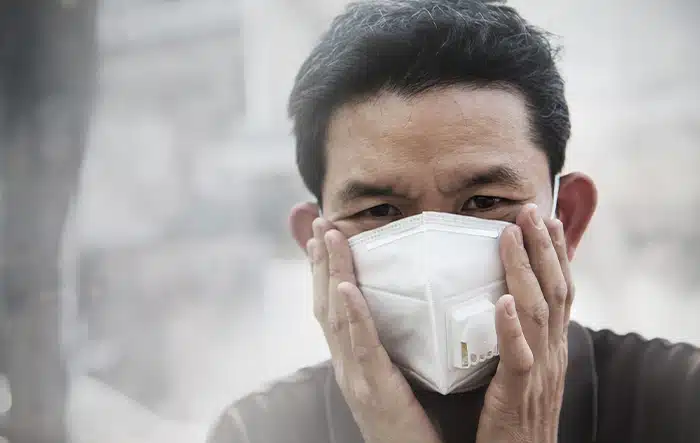
In general, groups who are considered the most sensitive to air pollution include:
- Those who already suffer from heart disease
- Coronary artery disease
- Congestive failure
- Angina
- Previous heart attack
- Those who already suffer from lung conditions:
- Chronic obstructive pulmonary disease
- Emphysema
- Asthma
- Chronic bronchitis
- Those who already suffer from a chronic disease
- Diabetes
- Infants and young children under 5
- Children under 14
- Pregnant women and uterine children
- Adults over 65
- Athletes
- Those who work outdoors
If you already have health challenges such as respiratory, heart, or other chronic diseases, exposure to poor air quality can exacerbate the existing conditions and impact most of the organs and systems of the human body. Nanosized particulate particles are known to pass through the blood-brain barrier and “translocate to the central nervous system.”
Studies by the Minnesota Pollution Control Agency found that the fine particles can make those with cardiovascular and heart diseases, asthma, and COPD worse, while ground-level ozone pollution can make sufferers of asthma and COPD, as well as emphysema, worse.
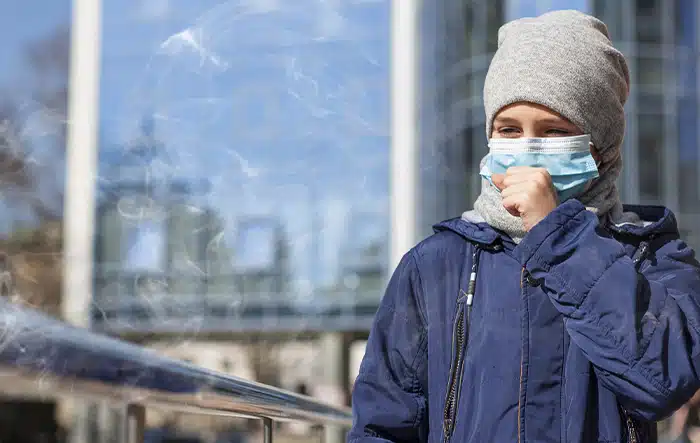
Young children up to 14 years of age face special risks from air pollution as their lungs continue to grow long after birth. Eighty percent of the alveoli, the tiny air sacs that transfer oxygen to the blood, develop after birth. In fact, only when young children become adults are their lungs and alveoli fully grown.
The body’s defense system for fighting off infections also continues to develop after birth. According to the World Health Organization, 2005, children have more respiratory infections than adults, and the consequences of exposure to air pollutants impact how well they can fight off infections and disease as they age.

Pregnant women and their uterine children are especially vulnerable to air pollutants. A large study in California revealed that higher particle pollution levels increased the risk of preterm birth. Other studies confirmed these findings, even when they controlled for other risk factors.
Growth retardation, low birth weight, and infant mortality are also found to affect uterine children. The study also found that “the brain is a target” for air pollution resulting in “delays or deficits in development.”
Not only are babies affected by air pollution while still in their mother’s womb, but researchers have also found that pregnant mothers have measurable negative effects from air pollution levels that fall below the U.S. Environmental Protection Agency (EPA) standards.

As people age, their bodies lose the ability to compensate for environmental hazard effects. Air pollution can impact older adults and aggravate heart disease, stroke, lung diseases, asthma, and diabetes.
Any of these aggravations can lead to “increased medication use, more visits to health care providers, admissions to emergency rooms and hospitals, and even death.”
Ozone and Particulate Matter (PM) have the greatest negative effect on older adults. Fine particle pollution has been linked to “premature death, cardiac arrhythmias and heart attacks, asthma attacks and the development of chronic bronchitis.” Even low levels of ozone worsen respiratory diseases.

Athletes and outdoor workers face a unique challenge when it comes to playing and working outdoors. Both types of activities can cause them to breathe primarily through their mouths during “strenuous activities.”
The effects of “mouth-breathing” mean the air they breathe bypasses the nose’s natural filtration mechanism. This leads to more air pollutants finding their way directly into their lungs and can then go from the lungs into the bloodstream, which affects organs as well as the lungs.
Poor air quality impacts the ability to breathe well, and it makes people who exert significant energy during work or play feel like they’re working even harder than they actually air. This “perceived exertion” can obviously have a direct impact on athletic performance.
One study of air pollution and marathon performance discovered that “every increase of 10 mg per cubic meter of PM10 air pollution can be expected to decrease marathon performance by 1.4%.” This short-term effect may affect the outcome of a game, but the long-term effects can be even more serious.
Symptoms of Air Pollution
The symptoms of exposure to air pollution can vary depending on the pollutant. Even perfectly healthy people can experience symptoms like:
- Irritation in eyes, nose, and throat
- Dry +/ sore throat
- Coughing
- Difficulty breathing
- Shortness of breath
- Headaches
- Nausea
- Tightness in chest
- Chest pain
- Wheezing
- Increased fatigue
While factors other than air pollution (like oppressive heat, humidity, and exposure to viruses or pollens) can also cause these types of symptoms, you should see your doctor if you feel a tightness in your chest, experience pain when breathing deeply or find breathing difficult even if you’re not engaged in physical activity.

Breathing polluted air can also worsen symptoms for people who already suffer from chronic illnesses, especially respiratory or cardiac diseases. Sometimes, this can lead to hospitalization or premature death in rare cases.
Types of Outdoor and Indoor Air Pollutants
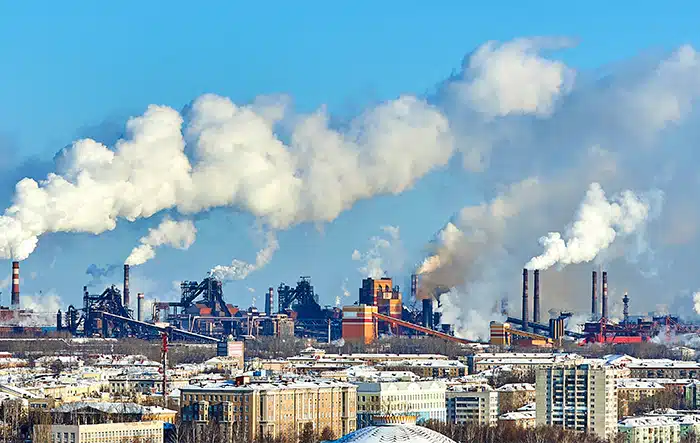
Examples of outdoor and indoor air pollutants include:
- Fine particles (PM2.5), which are tiny particles that can penetrate deeply into the respiratory system
- Ozone (O3)
- Sulfur dioxide (SO2)
- Nitrogen dioxide (NO2)
- Carbon monoxide (CO)
These pollutants come from motor vehicles, heating systems (oil, propane, wood, etc.), factories, and forest fires.
Developing Good Habits
As the issue of poor air quality and pollution is ongoing and increasing in severity, we all need to take whatever steps and precautions we can in order to protect our health and those we love. Developing good habits around air pollution will be all of our responsibility and one we need to take seriously.
The World Air Quality Index Project Team releases a real-time air quality index visual map where you can verify the air quality where you live. It lists the air quality index (AQI) values, the air quality forecast, along with air quality historical data.
If you live in an area with notoriously poor air quality, you might want to own your own air quality monitoring station. The Gaia Earth Sensing Labs sells air quality monitors that are “specially optimized, highly accurate, and easy to use.”
All of their semi-pro stations are carefully designed for “highly reliable and accurate monitoring.” The units are sold for USD $10 per month or USD $100 per year if you pay for the entire year. They’ll also send you a brand new station for free every two years, excluding the costs to ship the unit.
If you have respiratory or heart issues, make sure to bring any and all medication with you when you go outside. Follow your physician’s instructions closely to keep your symptoms under control.

Moderate your exertion if you are in areas with poor air quality. Your breathing gets deeper and faster when you are physically active, which pulls more air pollutants into your lungs. When you work or play outdoors, especially if your activities are physically intensive, you should pay special attention to your breathing and monitor any other symptoms of distress you might experience, like those listed above.
Pay attention to the quality of the air inside your home as outdoor pollutants like fine particles and ozone waft through open doors and windows into homes. These pollutants may already be in your home, and your air quality will improve if you eliminate them:
- Tobacco smoke
- Smoke from fireplaces and wood stoves
- Contaminants associated with excessive humidity (mold, etc.)
- Volatile formaldehyde compounds from:
- Household products (paints, varnishes)
- Construction material (chipboard, plywood panels)
- Carbon monoxide emitted by vehicles or during the burning of propane, wood, fuel, etc.
- Radon
- Asbestos
One of the simplest and best ways to protect yourself from air pollutants is to wear a MyAir mask. Our MyAir masks use an advanced filtration system that blocks airborne particles and retains moisture to help support health and hydration.
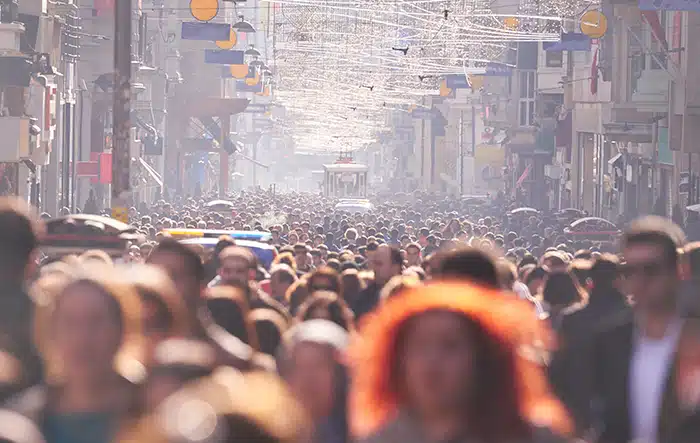


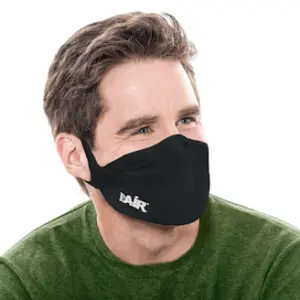









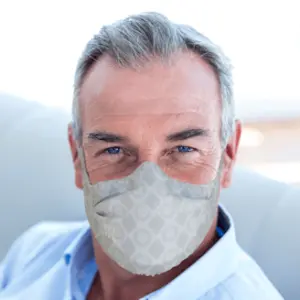






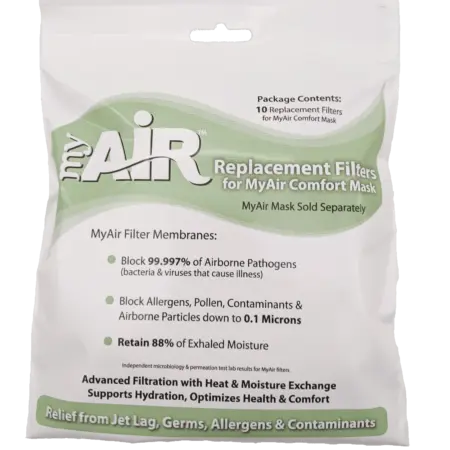
0 Comments